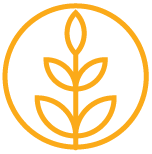
Animal welfare and sustainability of the Australian kangaroo harvesting industry
(DPIE) The Crown in right of the State of NSW acting through the DPI within the Department of Planning, Industry and Environment
-
Project code: PRJ-010771
-
Project stage: Closed
-
Project start date: Tuesday, August 1, 2017
-
Project completion date: Thursday, March 26, 2020
-
National Priority: KAN-Enhance industry success through targeted industry-specific RD&E
Summary
Commercial harvesting is currently the only effective and relatively humane method of reducing the broad scale abundance of kangaroos and consequently the negative impacts of kangaroo grazing on primary production enterprises and the environment. Over the decades there has been much research done on the sustainability of kangaroo harvesting and in recent years there has been new information published in the areas of carbon and methane emissions, animal welfare and improvements to harvest management (i.e. use of thresholds). Harvested kangaroo populations continue to be monitored under a range of harvest regimes and environmental conditions, providing an even stronger understanding of their population dynamics. With this project, the current state of knowledge on a range of aspects of harvesting will be compiled into a detailed report. New information will also be generated to gain a thorough understanding of the impacts of a male-only harvest and also to determine the welfare impacts of harvesting on kangaroos.
Program
Kangaroo
Research Organisation
(DPIE) The Crown in right of the State of NSW acting through the DPI within the Department of Planning, Industry and Environment
Objective Summary
The project aims to deliver a detailed report that compiles current expert knowledge and robust evidence on the animal welfare impacts and sustainability of the kangaroo harvesting industry and specifically examines the impacts and issues associated with a male-only harvesting approach. In addition, the animal welfare impacts and sustainability of commercial kangaroo harvesting will also be compared with other meat and skin producing industries (i.e. sheep, cattle, goats). The report can be used as a guide for the kangaroo industry to make improvements to harvesting methods and strategies and will help to deliver balanced outcomes for a range of stakeholders. Ultimately, it will also inform the best-practice management of kangaroos across Australia.
Specifically, the aims of the project are to:
Assess the animal welfare impacts of kangaroo harvesting and compare with (i) alternative kangaroo management methods (including no harvesting, exclusion fencing, non-commercial culling) and (ii) other meat and leather industries (i.e. sheep, cattle, goats).
Conduct a review of the environmental sustainability of kangaroo harvesting (i.e. in relation to carbon emissions, biodiversity maintenance, soil health, water usage etc.) and compare with other meat and leather industries (i.e. sheep, cattle, goats).
Determine the impacts of a male-only harvest on:
a. kangaroo populations (in comparison to other strategies that include both males and females)
b. kangaroo grazing impacts (cf. other strategies)
c. size of kangaroo harvest (carcase numbers and yield)
d. kangaroo welfare
Also, investigate the views of landholders and industry regarding a male-only harvesting strategy and determine the perceived risks and benefits.
Present a discussion of findings that includes a summary of recommendations for further analysis and research as well as improvements to current practices.
